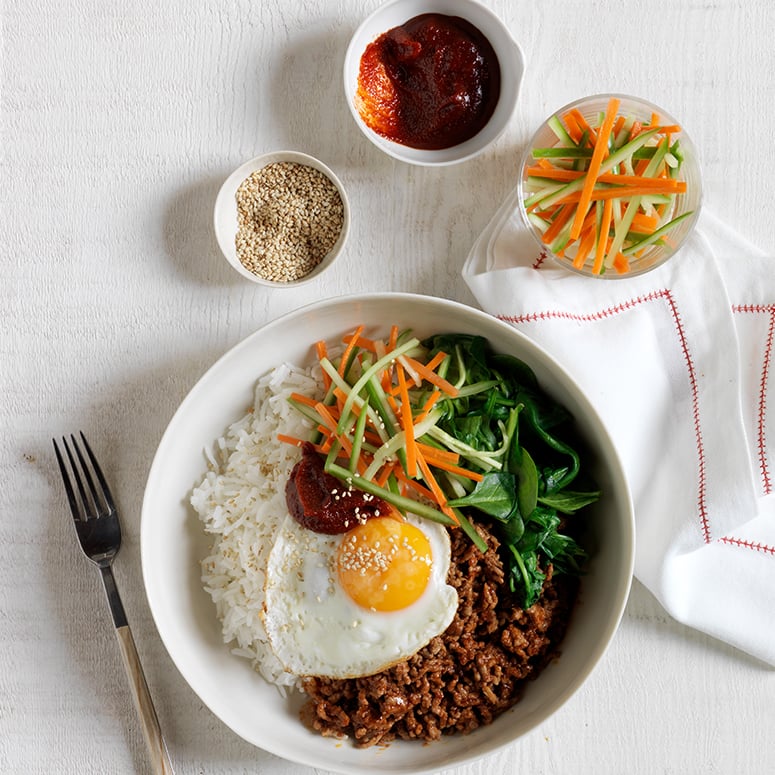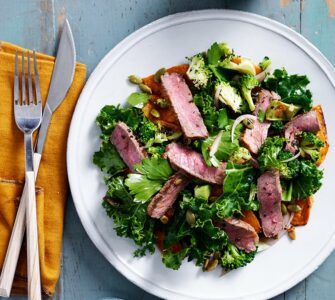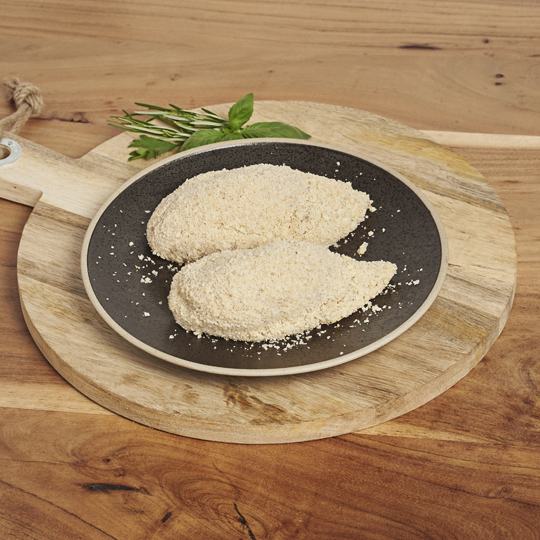Finding time to cook can feel impossible once school pickups, sport, and deadlines collide, yet a shared meal still anchors the family week. Korean Bibimbap literally meaning “mixed rice”, fits that gap brilliantly: steamed rice topped with colourful vegetables, an egg, chilli paste, and, in this version, quick-cooked spicy beef mince. The dish delivers balanced nutrition in minutes and lets everyone assemble their own bowl, so fussy eaters stay happy. Better still, choosing grass-fed beef adds an unmistakable depth of flavour and a welcome nutrient boost, proving that convenience and quality can share the same plate.

Why Choose Grass-Fed Beef
Grass-fed beef contains more omega-3 fats and antioxidant vitamins A and E than grain-fed alternatives, supporting heart health and reducing everyday inflammation. These benefits sit neatly alongside a leaner fat profile, which helps families keep an eye on kilojoules without skimping on taste. Purchasing grass-fed options also supports lower-impact farming – pastured cattle generally require fewer inputs and can improve soil health through natural grazing.
Australian shoppers are increasingly voting with their wallets, and the growing availability of grass-fed beef at local butchers like Church Street Butcher makes the choice straightforward.
Time-Saving Tips for Busy Families
Meal-prep in pockets of downtime
Cook a large batch of brown or white rice on Sunday, then chill it in shallow containers; it reheats perfectly in the microwave. Blanch or sauté vegetables such as carrot ribbons, baby spinach, and zucchini ahead of time and store them in separate tubs.
Adjust the heat for younger palates
Keep gochujang on the table instead of mixing it through the mince. Children can add a small dab (or skip it altogether), while adults spoon on as much fire as they fancy.
Leverage kitchen helpers
A rice cooker guarantees fluffy grains without supervision, and a non-stick skillet browns the mince in under five minutes. Pre-washed salad mixes make an instant vegetable layer when chopping time is tight.
Ingredients
- 600 gram Beef mince
- 2 tablespoon Sunflower oil
- 1 tablespoon Soy sauce
- 2 teaspoon Gojuchang chilli paste (plus extra to serve)
- 1 Carrot (3-4cm long thin batons)
- 1 Cucumber (3-4cm long thin batons)
- ¼ cup White vinegar
- 1 teaspoon Sugar
- 150 gram Baby spinach leaves
- 4 Eggs
To serve
- Steamed rice
- Sesame seeds (optional)
Instructions
- Heat half the oil in a large frying pan over medium to high heat and cook mince until brown. Reduce heat to low, add soy sauce and chilli paste and stir until combined. Check seasoning, add more paste if desired.
- Place carrot and cucumber in a medium bowl with vinegar, sugar and a pinch of salt. Allow to pickle for 10 minutes.
- Wash baby spinach, drain and place into a hot dry pan or wok and stir until just wilted. The water clinging to the leaves will be enough to soften them.
- Pan-fry eggs in remaining oil until cooked to your liking. Trim edges if desired.
- To serve, divide steamed rice between serving bowls and arrange the ingredients carefully on top. Finish with the egg and the chilli paste, and sesame seeds, if using.
Mid-Week Flexibility You’ll Love
Once you master the base method, Bibimbap becomes a template rather than a fixed recipe. Swap beef mince for tofu, chicken, or leftover roast meat; change the vegetables to match the fridge contents; or trade rice for quinoa when you need extra fibre. By choosing Australian produce—think free-range eggs, locally grown greens, and grass-fed beef—you keep food miles down and freshness high. More importantly, you create a dinner ritual that invites the family to sit, chat, and recharge before the next day’s chaos begins.
 Ultimate One-Pot Healthy Mexican Beef Bowl
Ultimate One-Pot Healthy Mexican Beef Bowl Finger-Licking Good: Beef Sausage, Potato, and Rosemary Pizzas
Finger-Licking Good: Beef Sausage, Potato, and Rosemary Pizzas Spiced Grass-Fed Beef Salad with Pumpkin and Kale A Nutritious Feast
Spiced Grass-Fed Beef Salad with Pumpkin and Kale A Nutritious Feast
